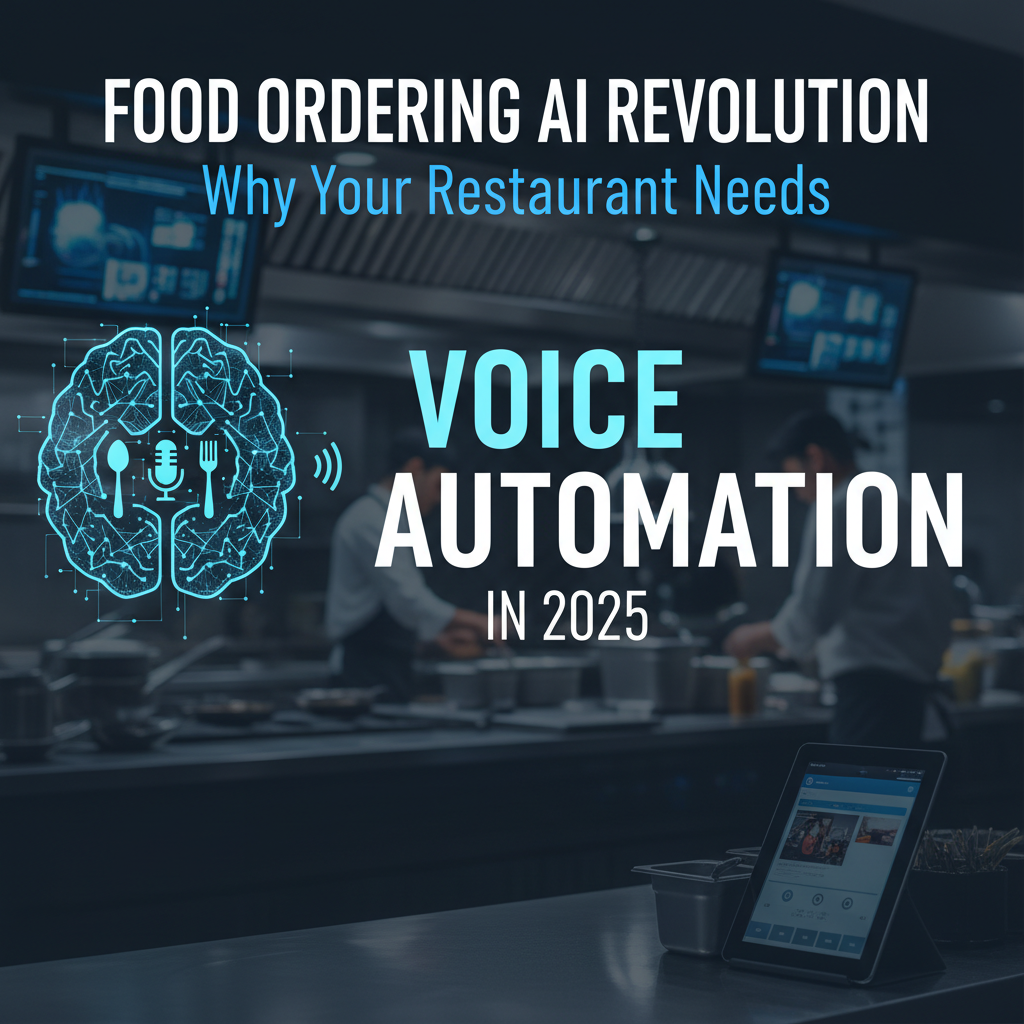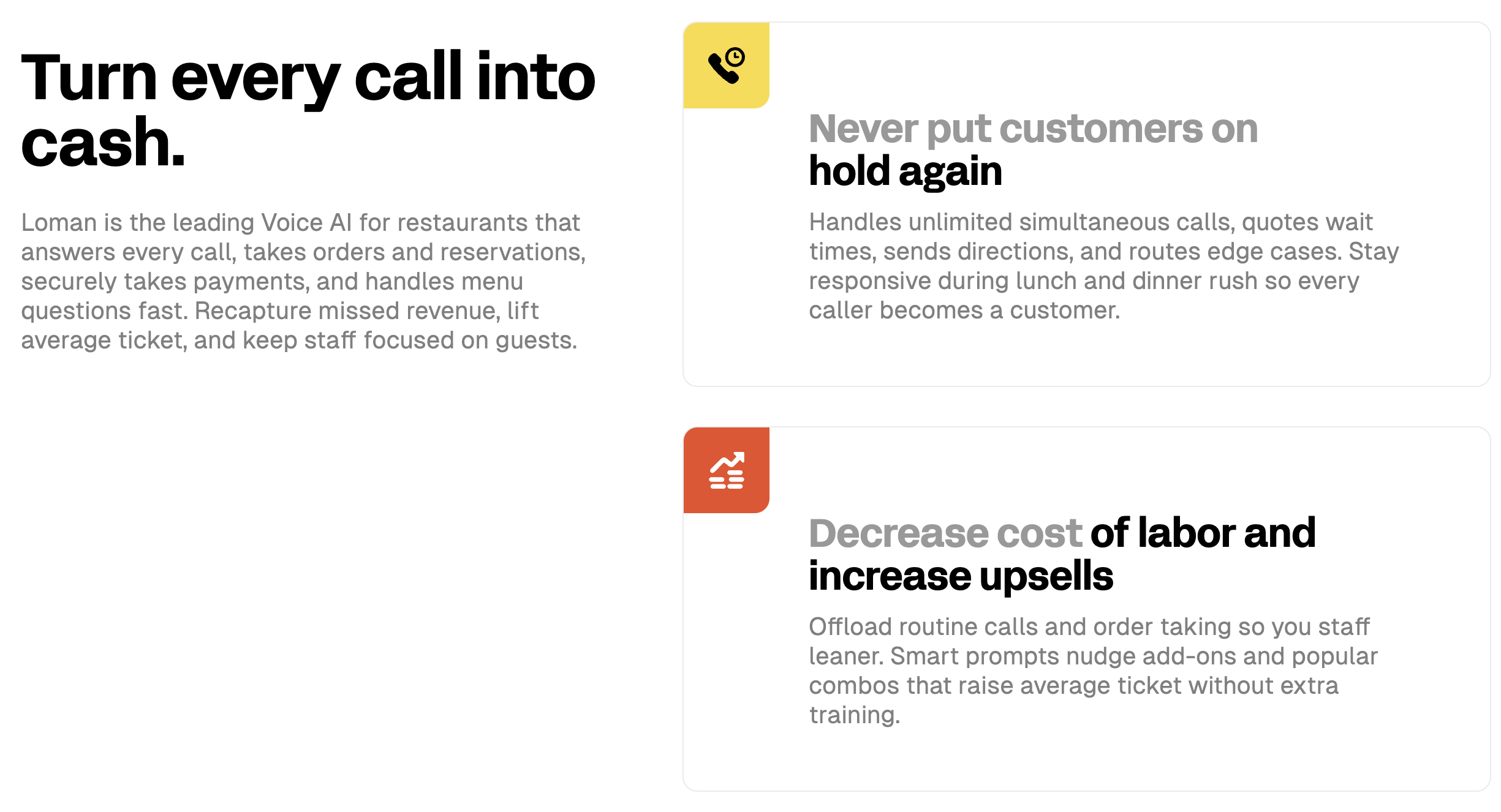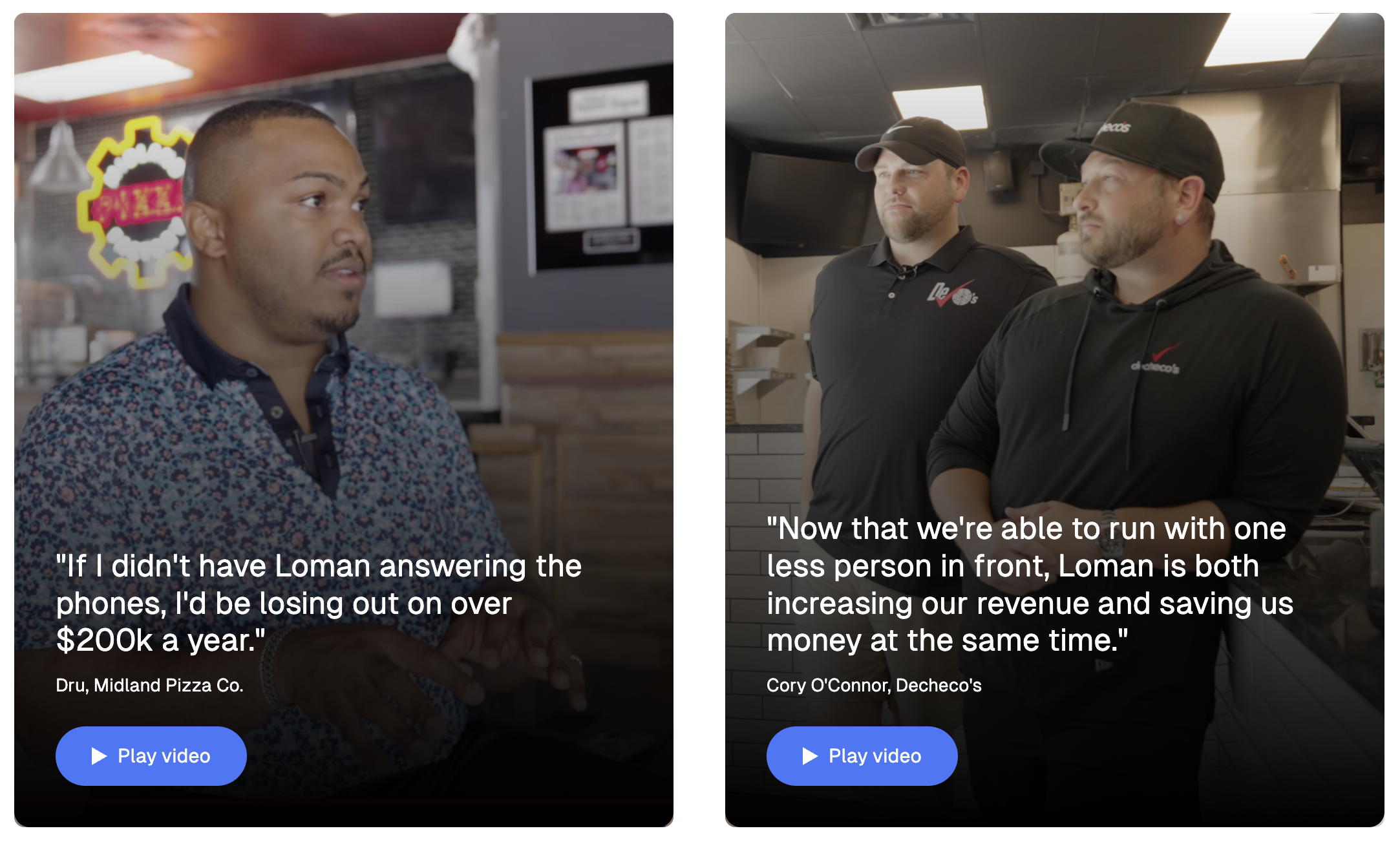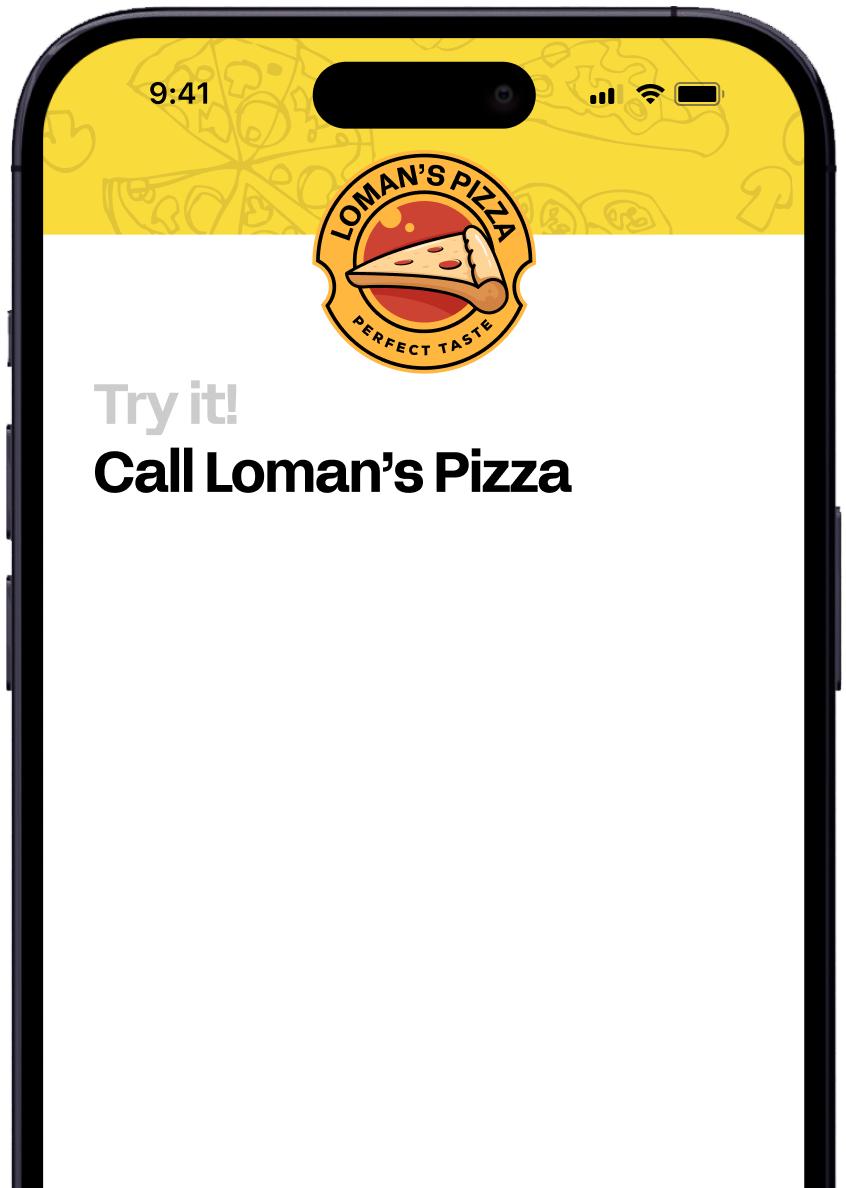October 27, 2025

You've likely watched your phone ring during dinner rush, knowing each missed call means lost revenue yet feeling powerless to answer while your staff juggles in-person guests. Every unanswered call represents a potential order, reservation, or customer relationship lost to a competitor who picked up.
Fortunately, restaurants no longer have to choose between excellent in-person service and capturing phone revenue. Modern voice AI food ordering systems are changing how restaurants handle every call, so you never miss another order again.
TLDR:
Voice AI captures missed restaurant calls, recovering tens of thousands in lost revenue annually
Restaurants report 22% higher revenue and 17% labor cost reduction with AI phone systems
Modern voice AI handles complete orders, payments, and POS integration without manual entry
AI upsells achieve 23.7% success rate compared to 18.9% for human hosts during peak hours
Restaurant phone operations face a crisis that's bleeding money from every missed ring. The numbers tell a brutal story about an industry struggling with outdated communication methods.
Restaurants miss an average of 150 calls per month, with 60% representing potential orders or reservations. At just $25 per average order, that's $27,000 in annual lost revenue per location.
For restaurants operating at razor-thin 1.5% margins, recovering that lost revenue could literally double their bottom line.
The root problem isn't laziness or poor service. It's physics. Your staff can't simultaneously take a phone order while plating dishes, seating guests, or running food. During dinner rush, every ring becomes a choice between serving the customer in front of you or the potential customer on the line.
Traditional solutions like hiring dedicated phone staff create new problems. Labor costs eat into already slim margins, and phone-only employees still get overwhelmed during peak hours. Call centers sound professional but lack menu knowledge and can't access your POS system directly.
This broken system forces restaurants into an impossible trade-off: excellent in-person service or capturing phone revenue.
Voice AI food ordering systems represent a massive leap beyond the clunky phone trees that made customers want to hang up. These systems use sophisticated speech recognition technology that converts spoken words into text through advanced processing, creating natural conversations instead of robotic menu navigation.

Order interpretation goes far beyond simple keyword matching. The AI understands context, handles complex requests, and can even clarify confusing orders. When someone says "I want that pizza from last time," the system can reference order history and suggest likely matches.
POS integration eliminates the manual entry nightmare. Orders flow directly into your existing system with accurate formatting, proper modifiers, and correct pricing. No more scribbled notes or miscommunicated special requests that slow down your kitchen.
Payment processing happens smoothly within the conversation. Customers provide card details over the phone, and the system processes payments through secure channels connected to your POS. The entire transaction completes without human intervention.
AI phone systems can now also handle multiple languages and accents, making them valuable for diverse communities, while also working across different restaurant types, from pizza shops to fine dining establishments.
The financial case for voice AI food ordering isn't theoretical, it's backed by hard numbers from restaurants already using these systems. Early adopters report up to 22% higher revenue by recapturing missed calls and generating upsells, while reducing labor costs by as much as 17%.

Let's break down the math for a typical restaurant doing $50,000 monthly revenue. Restaurants miss an average of 150 calls per month, with 60% representing potential orders or reservations. At $25 per average order, that's $27,000 in captured revenue annually. Combined with improved order accuracy and consistent upselling, restaurants see substantially higher returns.
Labor savings compound the benefits. A restaurant paying $15/hour for phone coverage during 60 hours of weekly peak times spends $46,800 yearly on phone staff alone. Voice AI eliminates that cost while providing 24/7 coverage.
The upselling advantage creates additional revenue streams. If your average order is $25 and AI increases it by just $3 through consistent upselling, that's 12% more revenue per transaction. On 1,000 monthly phone orders, that's an extra $36,000 annually.
Most voice AI systems cost between $200-500 monthly, making the ROI calculation straightforward. Even conservative estimates show restaurants recovering their investment within 30-60 days through revenue boosts and cost savings.
Voice AI doesn't replace your restaurant's workflow: it improves every touchpoint where phone interactions create friction. The integration happens at three key levels: order management, staff coordination, and customer data flow.
POS integration forms the backbone of smooth operations. When voice AI takes an order, it formats the ticket exactly like your staff would, complete with modifiers, special instructions, and timing preferences. The order appears in your kitchen display system instantly, removing the delay between phone pickup and kitchen notification.
Kitchen display systems improve communication between service teams and the kitchen, leading to better order accuracy and customer satisfaction. Voice AI amplifies this by making sure every phone order arrives with consistent formatting and clear instructions.
Staff coordination becomes effortless when AI handles routine inquiries. Your team receives notifications only for complex requests or edge cases that require human judgment. This creates a natural division of labor where AI manages standard operations while staff focus on detailed customer needs.
Voice AI acts like an invisible team member that never gets overwhelmed, never forgets menu details, and always follows your exact protocols.
Customer data integration provides unexpected benefits. Voice technology can transcribe customer experiences and build out customer data using more than just online orders, creating richer customer profiles for repeat callers and helps identify ordering patterns.
Voice AI technology in restaurants is maturing quickly. In 2025, adoption is shifting from isolated pilots to structured, results-driven rollouts. Leading restaurant groups are not using AI as a blanket fix or staff replacement; they’re applying it to tackle defined problems and optimize team roles.
Begin with a 30-day call volume analysis. Track missed calls, peak times, and average order values to establish baseline performance metrics. These numbers help determine system requirements and project ROI.
Next, evaluate AI phone agents for POS compatibility, ability to manage complex menus, and scalability to additional locations.
Before deployment, audit existing phone operations and integration points. Select a vendor with documented experience in restaurant environments for smooth implementation and accurate performance measurement.
Loman offers the only complete voice automation solution built specifically for restaurants.

Loman processes complex menu orders with customizations, manages secure payments, and syncs all transactions directly to your POS, eliminating the need for manual entry.
Loman integrates directly with Toast, Square, Clover, and other leading systems so all orders placed through its voice AI platform flow into your existing workflows automatically, with no duplication or disruptions.
Unlike competitors constrained by concurrent call limits, Loman handles unlimited simultaneous calls, even at peak hours. Customers can reach you instantly, with no busy signals and no lost orders.
True Multilingual Support
Beyond translation, Loman is able to converse naturally in multiple languages while preserving menu accuracy and cultural nuance. That means every guest receives the same 5-star experience, no matter their language.
Most restaurants can deploy voice AI systems like Loman in under 24 hours with white-glove setup, while some competitors require weeks or months of implementation. The process involves connecting your POS system, importing menu data, and configuring call handling rules.
Restaurants using voice AI report up to 22% higher revenue by capturing missed calls and generating upsells, while reducing labor costs by 17%. These gains come from never missing calls during peak hours, consistent upselling on every order, and eliminating dedicated phone staff costs that can exceed $45,000 annually.
Yes, modern voice AI systems process complete menu orders with modifications like "no onions" or "extra cheese," handle payments securely, and sync everything directly to your POS system. The AI understands context and can clarify confusing orders just like your staff would.
Voice AI acts as an addition to your team, not a replacement. It handles routine phone calls while freeing staff to focus on in-person guests and complex customer needs. The technology manages standard operations while your team handles complex situations that require human judgment.
Voice AI integrates directly with major POS systems like Toast, Square, Clover, and others, formatting orders exactly like your staff would with proper modifiers and timing preferences. Orders appear instantly in your kitchen display system without manual entry or double-handling.
Restaurant phone operations don't have to be a constant source of lost revenue and staff frustration. Voice AI technology has matured to the point where it can handle your complete phone workflow while your team focuses on creating great dining experiences. Loman offers the complete solution that captures every call, processes orders smoothly, and integrates with your existing systems. The question isn't whether voice AI will become standard in restaurants: it's whether you'll adopt it before or after your competitors do.

Enter your information in the form to receive a call from Loman and place an order like a customer would!